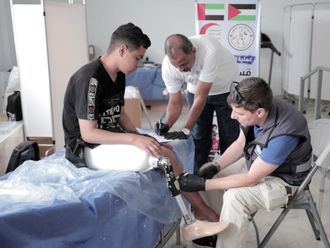Abu Dhabi: The Central Administration for Mother and Childhood at the Ministry of Health (MoH) organised a three-day training workshop on diagnosing cancer by using genetic engineering.
The event which took place February 14 to 16, was hosted by Dr Jonathan Bradshaw, an expert in the field of Fluorescent In Sytu Hybridization "FISH".
Dr Hajar Al Hosani, Director of the Central Administration for Mother and Childhood explained that using genetic engineering technique "FISH" is based on the discovery of gene activities that cause diseases such as breast cancer and leukemia (blood cancer).
"This genetic technique is one of the modern methods in determining the quality of disease and the possibilities of infections and the usage of immunotherapy. Genetic diseases such as breast and blood cancers need continuous follow up referring to the role of genetics in determining the causes of these diseases as well as their usage in defining treatment," she said.
Dr. Al Hosani added: "Breast cancer is the most common cancer in the world; therefore, the best protection from this disease is early detection with prompt treatment to guarantee chances of full recovery up to 95 per cent. Over the past 15 years, lots of achievements were made in terms of genetic diseases and factors that are associated with breast cancer".
Appropriate treatment
She explained that determining the existence of multiple copies of a gene through genetic testing for breast cancer cases using the FISH technique helps in determining the type of treatment appropriate for the immune-positive cases.
"Around 25 per cent of breast cancer cases have multiple copies of this gene and this increases [as] the possibilities of the disease increase," said Al Hosani.
Among other applications for FISH technique is the detection of acute and chronic white blood cells cancer, leukemia. FISH can help doctors to find the appropriate treatment and identify with great accuracy by taking a blood sample from the patient.
This is done before starting the treatment and then determining the percentage of pathological cells and then following the patient every 4-6 months to determine the progression of the disease or its cure.












